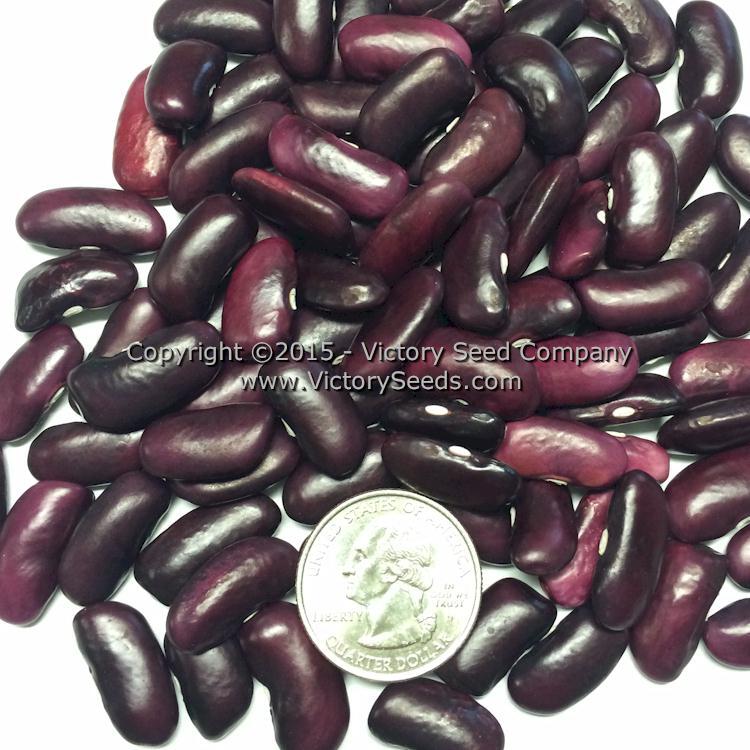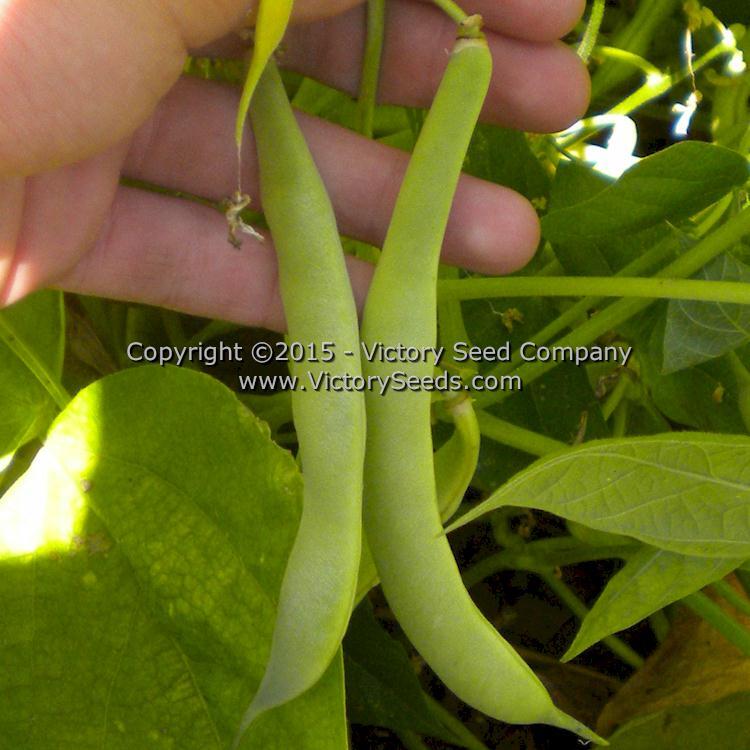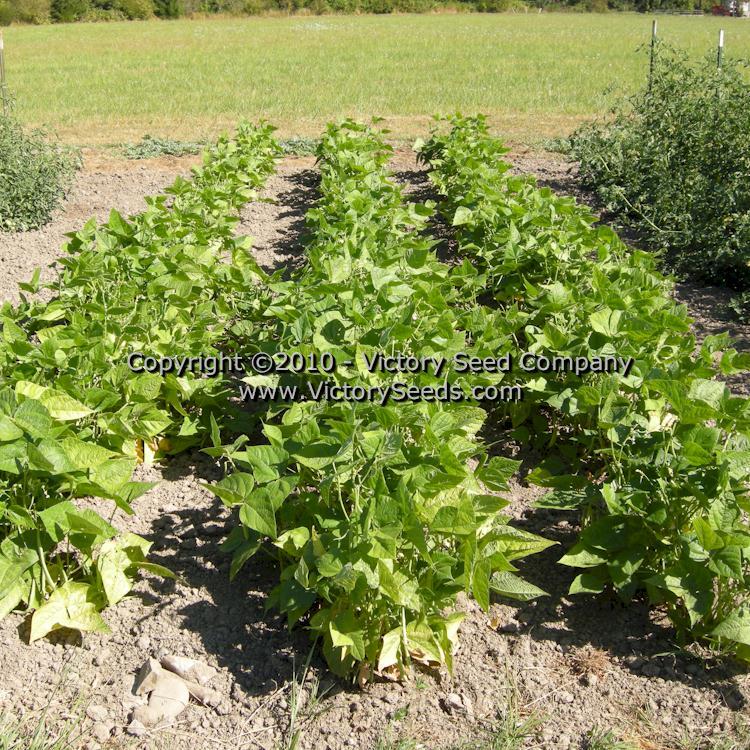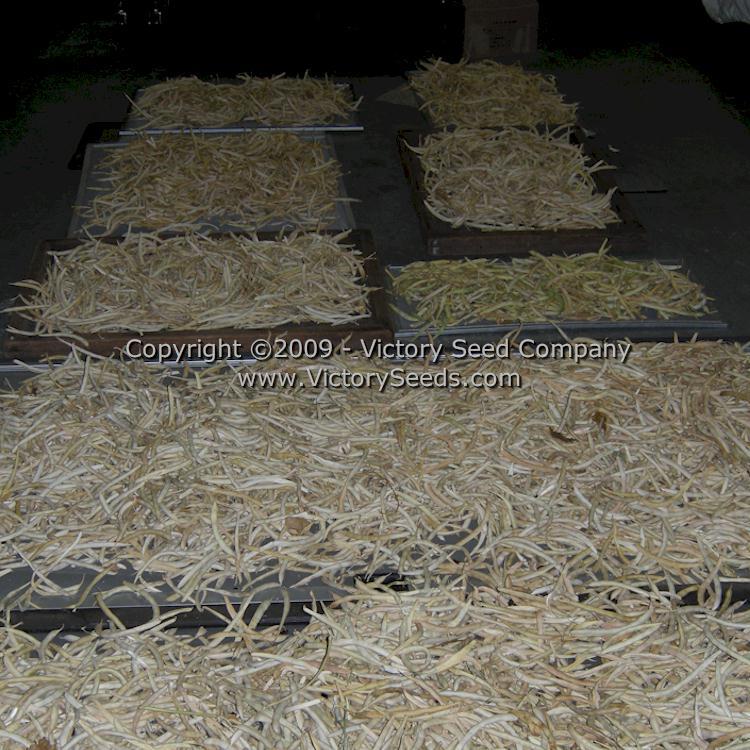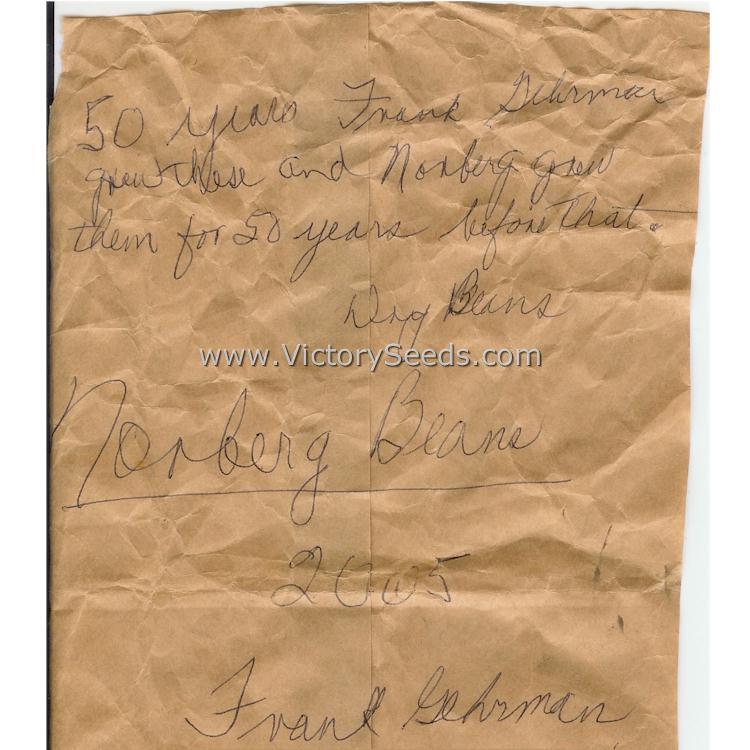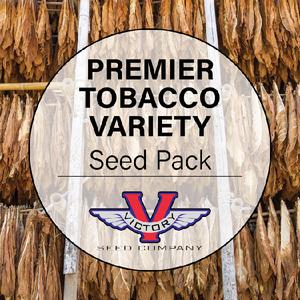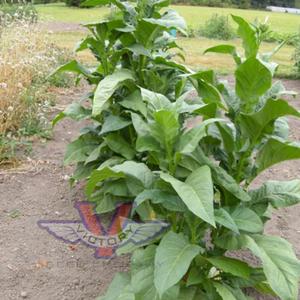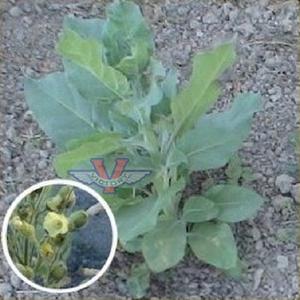







Large Purple Kidney (Norberg / Wanda) Bush Dry Garden Bean
Price: $4.95
SKU: 3030641
90 days — 'Large Purple Kidney' bean plants are erect, reach about twenty-four inches in height, require no support, are uniform in production, and are very productive. The pods are reach six to seven inches long with kidney-type beans that are large, meaty, and a deep maroonish-purple color. The bean turns brown when cooked and although they look similar to other kidney beans, the flavor is outstanding. They seem to stay moist and not dry out.
We love mysteries and this bean's history is one of them. Two different gardeners, from opposite ends of the Willamette Valley in Oregon, provided us with seeds and similar stories.
We received the first sample of this bean in 2001 when we were contacted by a local gardener named Gayenell Henderson. Gayenell told us that her grandmother, Wanda Paxton, had grown them for over fifty years. Wanda had received seeds from her German neighbor who grew them commercially on his farm during World War II near Damascus, Oregon. Wanda grew them in her garden every year until her death in 2000. Gayenell had already picked up the preservation torch by growing them in her own garden since the mid-1980s, but she wanted to share them and hoped that we would help make them available to more gardeners. Gayenell passed away in 2013.[1]
In 2005, we were contacted by a man that lived to the south of our farm by the name of Frank Gehrman.[2] Mr. Gerhman was a decorated veteran of World War II who upon returning from the war, bought his farm in Scotts Mills, Oregon from an elderly farmer by the name of Mr. Norberg. Norberg reportedly had been growing the bean on his place for fifty years and used it as one of his primary staples. Because it did so well, Mr. Gehrman continued growing the beans on his farm for nearly sixty years until his death in 2007.
Although we originally named the bean, "Wanda" and Mr. Gerhman called it "The Norberg Bean," it is clearly the same variety and so we simply gave it the descriptive name of 'Large Purple Kidney'. Judging by the historical narrative we have, we suspect that it was once an old commercial variety grown in the Willamette Valley and are still working at collecting and searching through old regional seed catalogs for a match.
This is one of our favorite beans to grow here on our farm. No matter what Mother Nature throws at us in any given year, this bean thrives and produces well. Each packet contains one ounce, which is approximately 35 seeds.
Beans are a tender vegetable and you should not plant them until all danger of frost has passed and the soil remains above 65ºF. Sow seeds .1-1½ inches deep, every two to three inches. Bush-type beans do not require support.
Allow pods to remain on the plant until they are brittle and open easily. However, if you live in an area with a short growing season, harvest as close to dry as possible and finish drying indoors. Rain and freezing temps will damage beans.
- Email and postal correspondence with Gayenell Henderson, 10/8/2001 to 12/21/2002. Gayenell passed away in July of 2013.
- Telephone, personal visits, hand written notes with Frank and Bonnie Gehrman, 2005 to 2006.
- Find-A-Grave listing for Frank Gehrman.
- The Hall of Valor Project. page for Frank Gehrman.
- Obituary of Frank Rudolph Gehrman, Statesman Journal, Salem, Oregon, November 28, 2007.
- Fold 3 entry for Frank Gehrman.
- "Oregon at War," Oregon Public Broadcasting, broadcast September 27, 2007.
The President of the United States of America, authorized by Act of Congress, July 9, 1918, takes pleasure in presenting the Distinguished Service Cross to Staff Sergeant Frank R. Gehrman, United States Army, for extraordinary heroism in connection with military operations against an armed enemy while serving as a Medical Aidman with the 162nd Infantry Regiment, 41st Infantry Division, in action against enemy forces on 5 June 1944, at Biak Island, Dutch New Guinea. After a battalion had dug in for the night, the enemy launched an attack, subjecting our perimeter to intense knee mortar, machine gun and sniper fire causing many casualties. Staff Sergeant Gehrman left his foxhole and exposed to enemy fire began caring for the wounded. Although the area around the perimeter was infested with enemy patrols, he volunteered to accompany litter cases to a place of safety. On seven different occasions, without regard for his personal safety he removed wounded men from areas of heavy enemy mortar, artillery and machine gun fire. By his exceptional courage on this occasion, Staff Sergeant Gehrman contributed to saving many lives. His intrepid actions, personal bravery and zealous devotion to duty exemplify the highest traditions of the military forces of the United States and reflect great credit upon himself, the 41st Infantry Division, and the United States Army. [Source]
